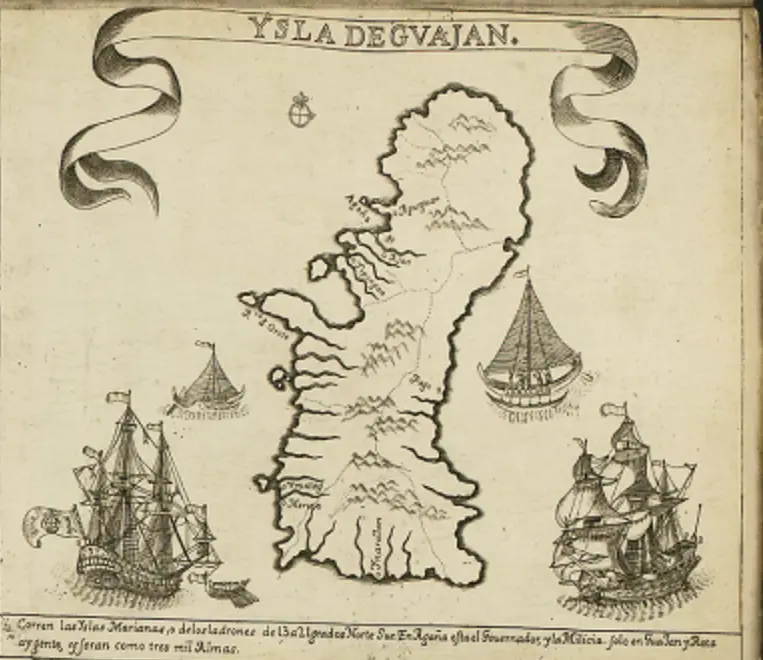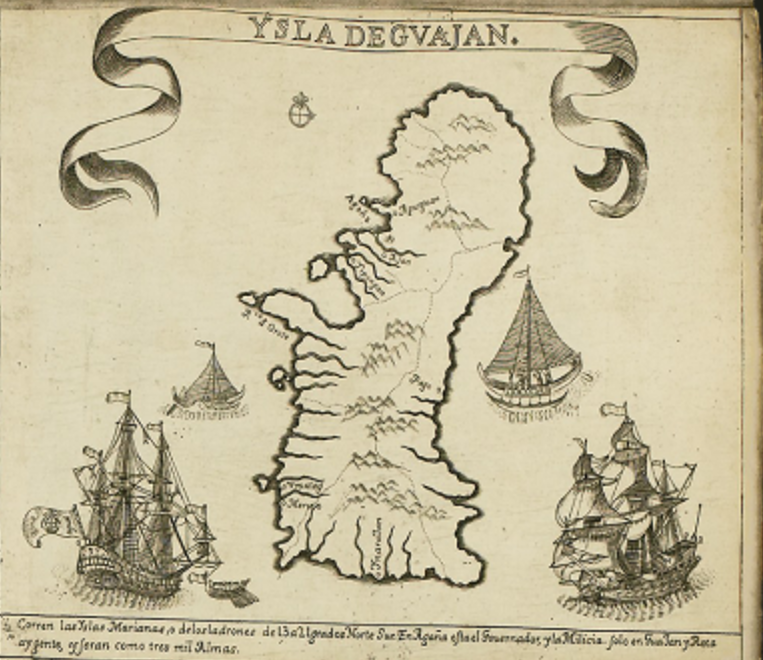2 photos

Quadrant D8 Ysla Degvajan
@quadrant-D8-ysla-degvajan
Associated Sub Page

Recently Viewed Pages
-
1 Like 0 Comments 543 Views 0 Favourites
-
0 Likes 0 Comments 144 Views 0 Favourites
-
5 Likes 0 Comments 1.4K Views 0 Favourites
Locked Page
Seems you enter wrong password click here to enter password again.
Overview
The Quadrant D8 of the Murillo Velarde 1734 map, which features "Ysla de Guajan" (Island of Guam).
1. Island Depiction
-
-
The map illustrates Guam, the largest island in the Mariana Islands.
-
It is shown with mountain ranges, rivers, and coastal settlements.
-
Spanish annotations label key locations.
-
-
Maritime Elements
-
Galleons & Native Boats
-
The quadrant includes Spanish galleons and local Chamorro canoes, signifying the maritime activity in the region.
-
This highlights Guam’s role as a key stopover for the Manila-Acapulco Galleon Trade.
-
-
Compass Rose & Navigation Marks
-
Helps Spanish navigators chart courses through the Pacific.
-
-
-
Historical Context
-
Spanish Colonization
-
Guam was a vital resupply point for Spanish ships crossing the Pacific.
-
The island was administered from Manila, reinforcing the Philippines' importance in Spain’s Pacific empire.
-
-
Chamorro Population
-
The text mentions a population estimate of around 3,000 people.
-
The native Chamorro people were influenced by Spanish missions and governance.
-
-
-
Strategic Importance
-
Guam served as a Spanish military outpost against pirate raids and foreign incursions.
-
The island was a key link between the Philippines and New Spain (Mexico).
-
Significance of This Quadrant
-
Highlights Guam’s role in the Spanish Empire and its connection to the Philippines.
-
Illustrates early Chamorro culture and Spanish influences.
-
Provides insight into Spanish maritime routes in the Pacific.
Details
-
Created by
Joel Gonzales

- Created on Feb 18
- Stats 0 Likes, 0 Comments, 609 Views, 0 Favourites 0 Followers
- Category History
- Tags #Murillo Velarde 1734 Map , #Vignette , #Quadrant 8
Ysla Degvajan


